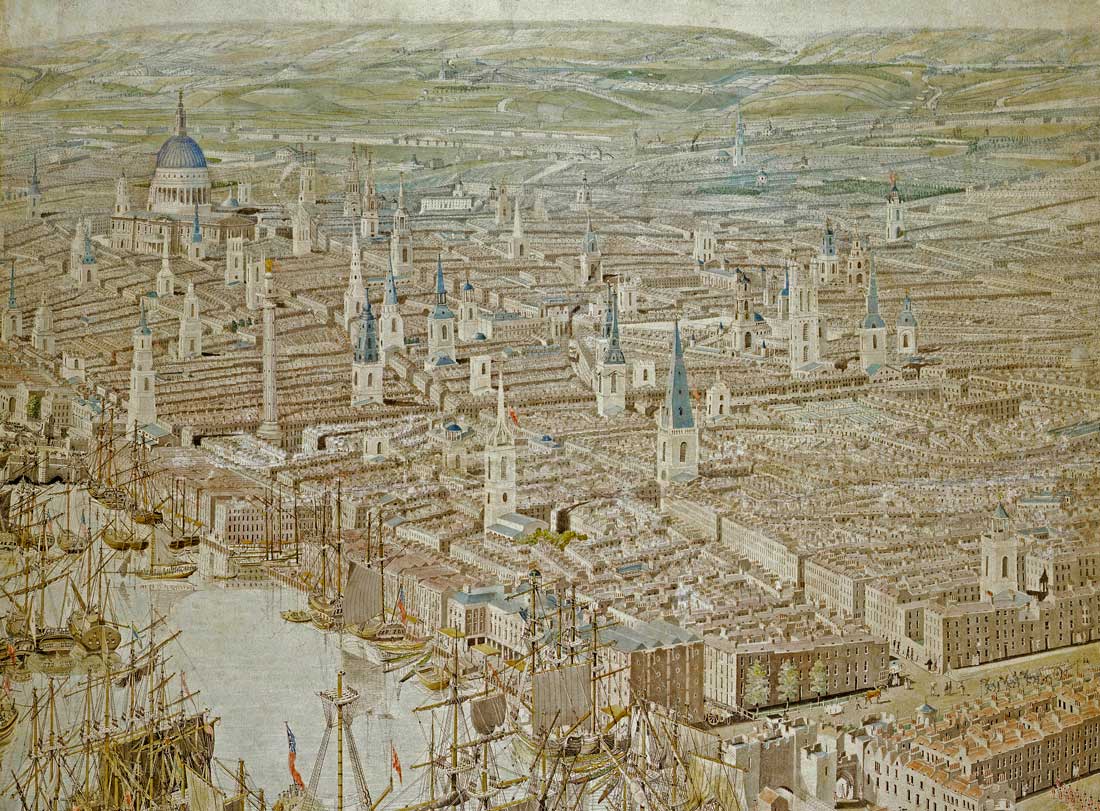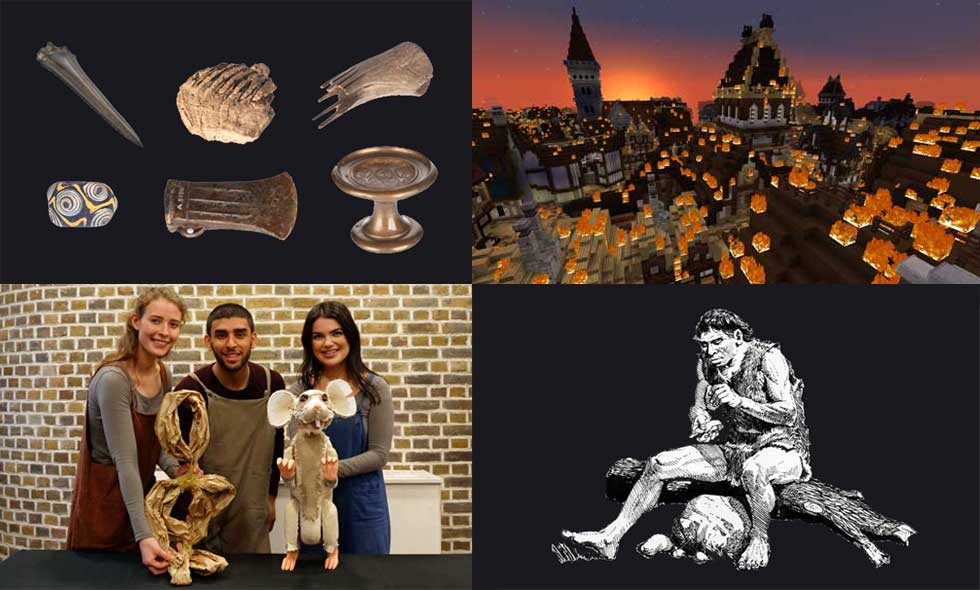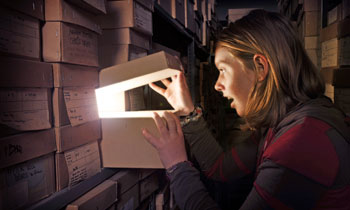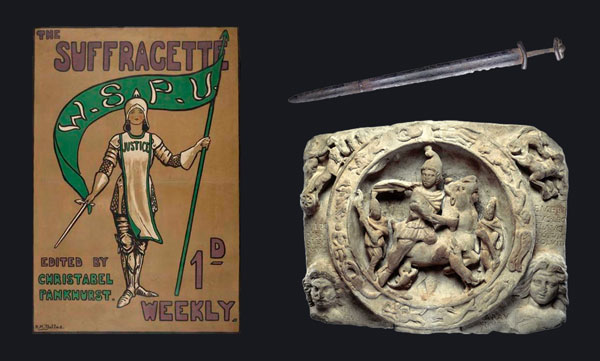Rhymes in Time:
Oranges and Lemons
Sing along to this nursery rhyme – and do the actions! – then dive into the curious history behind it. Is it really about delicious fruits? Perhaps not!
You can click here to find a full transcript of this video.
Oranges and lemons,
Say the bells of St Clement's.
You owe me five farthings,
Say the bells of St Martin's.
When will you pay me?
Say the bells of Old Bailey.
When I grow rich,
Say the bells of Shoreditch.
When will that be?
Say the bells of Stepney.
I do not know,
Say the great bells of Bow.
Here comes a candle,
To light you to bed.
Here comes a candle,
To light you to bed.
What's it all about?
You might assume that this nursery rhyme is about fruit, but it's actually about some of London's famous churches.
In medieval London, most people were Christian and there was a church on almost every street. Religion had an impact on most aspects of people’s lives: schools and hospitals were run by the Church, it decided which days were holidays, and it even influenced what and when you ate!
Most of London’s churches have huge bells which are rung on special occasions. Throughout the rhyme, we hear the bells of each church ‘speaking’ to one another as they chime. They aren't actually speaking, of course! The words that they 'say' in the rhyme are meant to sound like the unique melody made by each church's bells as they ring.
Have you ever heard church bells ring? What did you think of the sound?
Things to do!
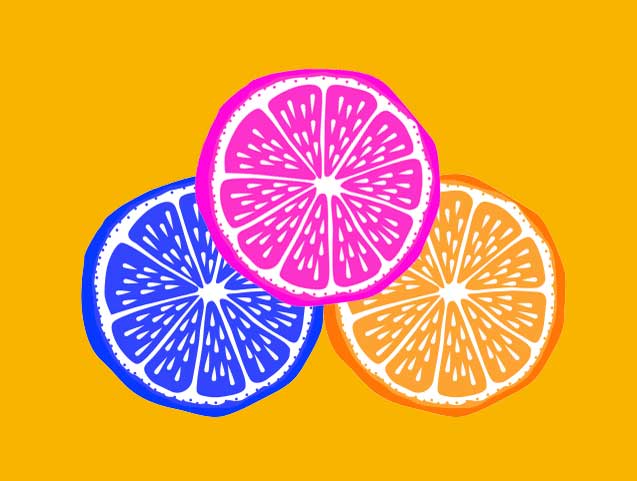
Orange printing
Why not try cutting an orange and lemon in half and making your own ‘oranges and lemons’ print?
You could try with other fruit and vegetables too and use your favourite colour paint.
All sorts of things from home can be used to make great patterns!
Ding-dong, listen to the bells
In Oranges and Lemons, each church has its own unique-sounding bell.
If you had a bell, what would it look like and how would it sound? Would it sing your favourite song?
Draw a picture of it!Take a closer look
London from above
This section of this panorama (panorama means a wide view of an area) shows what the City of London looked like in 1807.
The rhyme mentions oranges and lemons – just a couple of the cargoes coming into the city from across the world since medieval times. Here, we can see the River Thames, packed with ships bringing these goods to the city.
How many ships can you spot in this part of the panorama? How about church spires?
St Paul's Cathedral
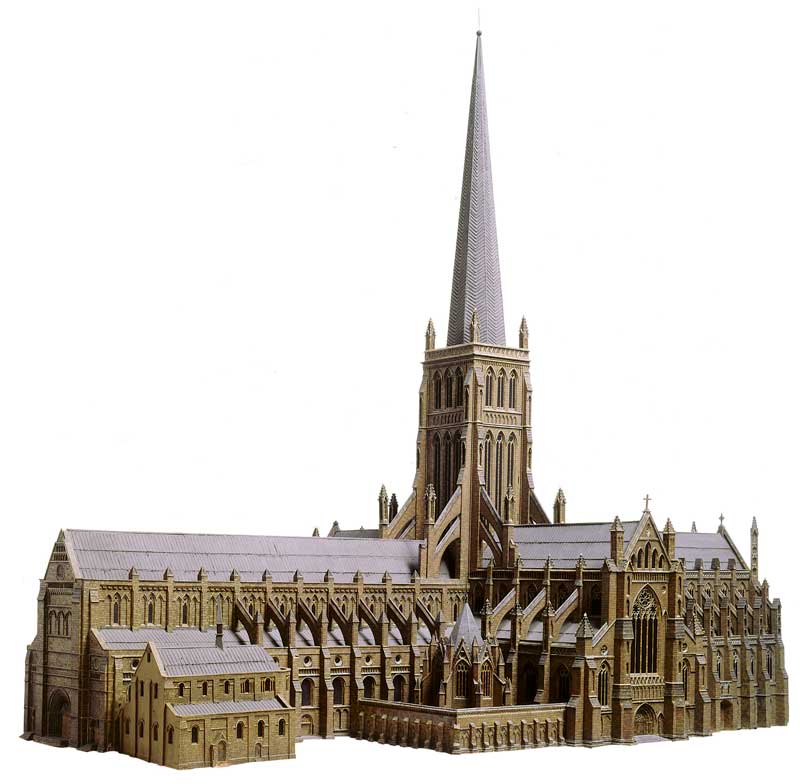
This is a model of the medieval St Paul’s Cathedral. Like many other churches, it burnt down during the Great Fire of London in 1666 and was rebuilt by Sir Christopher Wren.
In fact, before the Great Fire, there were 109 churches in the City of London. The fire burnt 87 of them down!
Find a picture of St Paul’s Cathedral today. What differences can you find between the medieval and modern cathedrals?
Fruits from afar
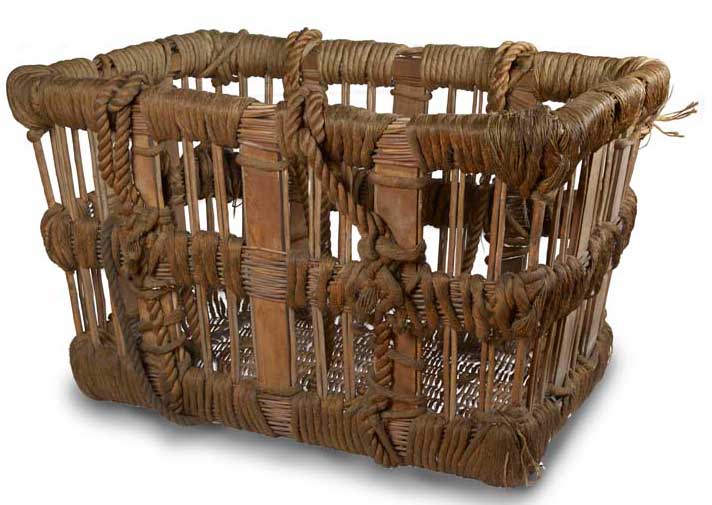
Oranges, lemons and other cargoes have been arriving in London from across the world for centuries!
Similar baskets would have been used since the medieval period to offload the cargoes from ships and into the warehouses which lined the River Thames.
Can you think of any other goods that would have arrived on ships? Think about what you buy at the shops today.
On the bill
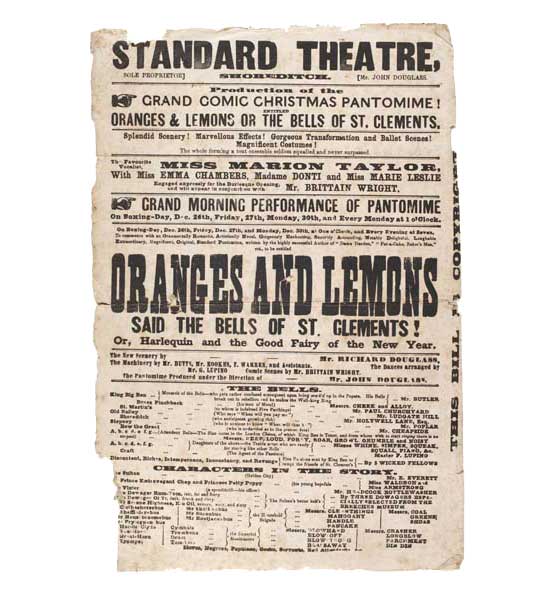
In this playbill, the Standard Theatre in Shoreditch announces their 1804 Christmas pantomime production of ‘Oranges and Lemons’.
Who do you think the characters in the play might have been?
Have you ever seen a pantomime? If so, what was it?
Fabulous farthings
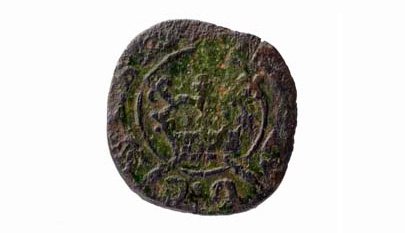
Farthings were once a type of coin worth one quarter of a penny. Look closely – can you see a crown in the middle?
Can you spot where a farthing is mentioned in the rhyme?
Investigate more
Where did the rhyme come from?
Exactly where and when this nursery rhyme comes from is a mystery. Historians have found a dance song called ‘Oranges and Lemons’ that dates all the way back to 1665, but we don’t know if the lyrics to that dance were the same as the ones in the song we know today.
What movements would you do if you were dancing to the song?
Since then, children singing the rhyme have changed it and made up their own parts. Some versions were much longer, mentioning as many as 15 churches! Can you imagine how long that would make the rhyme?
We also don’t know why the rhyme was written. Perhaps it was a way for Londoners to remember the names of some of the many churches in the city.
Do you use any rhymes to help you remember things?
What churches are mentioned in the rhyme?
Most people agree that the 'St Clement’s' in the rhyme is St Clement’s church on Eastcheap in the City of London.
'St Martin’s' is probably St Martin's Orgar, a medieval church in the City of London in Martin Lane, off Cannon Street. It was mostly destroyed in the Great Fire of 1666, but part of the tower and nave were repaired and used until 1820. In the rhyme, its bell chimes ‘you owe me five farthings’. This probably relates to the many money lenders who worked around the church. Money lenders loaned money to the poor when they were struggling, but often they demanded that the borrower pay the money back plus a lot more money added on top. This meant that often the poor were made even poorer! So, here, the bells are demanding re-payment, just as the money lenders would have done.
‘Stepney’ is St Dunstan’s of Stepney, which is one of the oldest churches in London and was once an important church for sailors to visit.
‘Bow’ is most likely St Mary le Bow. Often it is said that only people who are born within the sound of the famous ‘Bow bells’ are true East London ‘cockneys’. The ‘Great bells of Bow’ might refer to the bell in the church which rung every evening at 9pm and signified that people should go home.
The Old Bailey isn’t a church, so why is it in the rhyme?
The Old Bailey in the rhyme was a famous medieval courthouse, not a church, and it certainly didn’t have any bells! In the rhyme, the bells sing ‘when will you pay me’. This refers to some of the people locked up in Newgate prison, the most notorious prison in medieval London. Many of the prisoners were debtors (they didn’t pay back money they had borrowed), so as punishment, they were locked up in horrible, crowded and dirty conditions.
The bells of the Old Bailey in the rhyme would have been the bells of St Sepulchre-without-Newgate, which stood opposite the courthouse at the time. Did you know that any church with the word ‘without’ in its name tells us that it was built just outside of the medieval city walls? The medieval courthouse was yet another building destroyed by the Great Fire. It was rebuilt in 1674 and the Old Bailey is still used as a courthouse today!
More Rhymes in Time
Watch more performances of classic nursery rhymes and discover the history behind them.
[VIDEO BEGINS]
[00:00:08]
Hello everyone! And welcome to the Museum of London's Rhymes in Time. My name is Emily, and today I'm gonna do some singing with you, so I hope you've got your singing voices ready, and your hands to do some actions. Now, today's nursery rhyme is all about the church bells of London. Have you ever heard the church bells ringing, like this? Ding dong, ding dong, ding dong! Good! And also, today's nursery rhyme has got some fruit in it. Let me see what I've got here.
[00:00:55]
Oh! Here's one piece of fruit, and here's another piece of fruit. Let's see if we can work out what these bits of fruit are. Now, this one here - ooh - is this an apple? No? Is it a banana? No, ooh. Do you know what kind of fruit this is? It's an orange! Well done. Now, what about this one here? Is this one an apple? No? Oh. Is it a banana - it's yellow! Oh, no it's not a banana. Do you know what fruit it is? It's a lemon! Wow! Oranges and Lemons, and that is the name of our nursery rhyme today. Do you know that one? Let's see if we can sing the words together. I'm gonna put these down here and we'll try and do some actions first. Then we'll try the song with my guitar.
[00:02:06]
Are you ready for some singing and some actions? Show me your fingers, here we go. So we're gonna put them like this - our oranges and our lemons to begin with. And every time we talk about churches, we're gonna do a 'ding dong' actions. Let's give it a go. Let me just check - C - there we go, so...
Hands like this
♪ Oranges and lemons,
say the bells of St Clement's. ♪
Well done. Now put your hands up - one, two, three, four, five.
♪ You owe me five farthings,
say the bells of St Martin's. ♪
Good, now we need our stern voices, like this.
♪ When will you pay me?
Say the bells of Old Bailey.
When I am rich,
Say the bells of Shoreditch. ♪
Very good. Now, tap your watch.
♪ When will that be?
Say the bells of Stepney.
I do not know. ♪
Can you do that?
♪ Say the great bells of Bow. ♪
Now we need to make a curl like this for the flames.
♪ Here comes a candle, to light you to bed.
Here comes a candle, to light you to bed! ♪
[00:03:45]
Can you blow it out?
Well done everyone! Very good. Do you think we can try it with the guitar? Now, don't worry if you don't remember all the actions. Just give it a really good go! So, here's my little guitar - are we ready? Here we go…
[00:04:04]
[GUITAR TONES]
♪ Oranges and lemons,
say the bells of St Clement's.
You owe me five farthings,
say the bells of St Martin's.
When will you pay me?
Say the bells of Old Bailey.
When I am rich,
Say the bells of Shoreditch.
When will that be?
Say the bells of Stepney.
I do not know.
Say the great bells of Bow.
Here comes a candle, to light you to bed.
Here comes a candle, to light you to bed! ♪
[00:05:06]
Blow your candle out! Well done everybody. Give yourselves a big clap
[CLAPPING]
That was fantastic! Did you enjoy doing that with me? Maybe you can make up your own verse at home. So, I hope you enjoyed singing Oranges and Lemons today. And if you head over to the Museum of London website, you can find lots of fun activities to do with our nursery rhymes. Well, that's all from me for this time. See you again soon! Bye!
[00:05:46]
[VIDEO ENDS]








